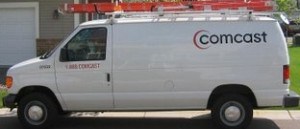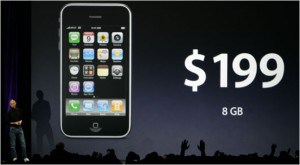
Comcast introduces the nation's capital to 50Mbps "wideband" service
Back in the 1980s, cable television systems in suburban Washington, DC and northern Virginia often showcased all that was possible for that era of cable operators. When legislators and other movers and shakers were done for the day, they found some amazing cable services waiting for them when they got home. Media General’s cable system in Fairfax County had an unprecented two coaxial cables going into each home, with up to 60 channels on each cable, and this was in the early 1980s, when most cable systems provided no more than 40 channels. Up to 120 channels at prices often cheaper than cable systems with 30 channels, Media General received a lot of praise.
Providing a high level of service with robust competition in the nation’s capital is a great way to diffuse complaints about poor quality monopoly service at high prices reaching members of Congress from constituents back home. More than a few elected officials opposing pro-consumer legislation in the 1980s and early 1990s used to rave about cable service they received in Washington, forgetting things were hardly as rosy back home.
Now Comcast, which provides cable service through large parts of the metro Washington, DC area, has announced the arrival of 50Mbps cable modem service, made possible with DOCSIS 3 upgrades. Comcast will reap the profit potential of offering consumers and businesses higher tiers of broadband speed, making customers happy and reporting higher broadband revenue, which will also keep investors pleased.
Unlike Time Warner Cable, Comcast is bullish on deploying DOCSIS upgrades across all of their cable systems. Comcast COO Steve Burke said, “We are hardcore on DOCSIS 3.0. We want to have two-thirds of our footprint by end of year.”
Comcast is also positioning itself to compete with Verizon FiOS, now being wired in parts of DC, Maryland, and Virginia.
The company announced the new “wideband” service was now available in the Anacostia area east of the river. Over the course of the summer into fall, it will become available in parts of Arlington County, the City of Alexandria, Montgomery County and Prince George’s County.
Comcast promises to have 100% coverage by the end of the year.
New Speed Tier Pricing (assumes customer has at least one other Comcast service)
Extreme 50 — 50 Mbps down/10 Mbps up — $99.95 per month
Ultra — 22 Mbps down/5 Mbps up — $62.95 per month.
Deluxe (Business Class) — 50 Mbps down/10 Mbps up — $189.95/month (includes business class extra features)
Existing broadband services at slower speeds will also remain available at current prices, but customers may find reduced congestion made possible by DOCSIS 3 upgrades.
Where is the downside? Comcast is keeping a strict limit of 250GB of consumption on these new residential tiers, which reduces their value, particularly on the higher priced plans.


 Subscribe
Subscribe



